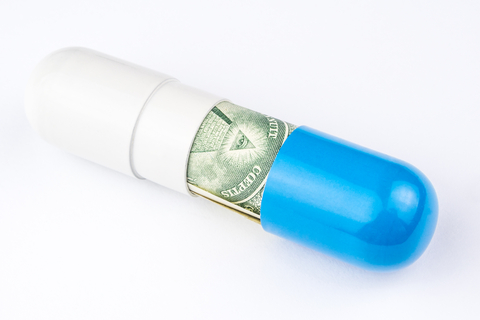Prices for certain drugs that treat multiple sclerosis (MS) have exploded as much as 700% in the last 20 years. Though new drugs have entered the market, the presumed downward effect on prices caused by competition has not occurred, according to a new study based at Oregon State University (OSU).
The study, led by Daniel Hartung, associate professor, Oregon State University/Oregon Health & Science University College of Pharmacy, Portland, Ore, reports there are no multiple sclerosis drugs available in the United States with a list price less that $50,000 per year.
Furthermore, a group of drugs available to treat this disease is rising in price at five to seven times the normal rate of drug inflation in the United States, according to a media release from OSU.
The authors believe the findings spotlight a systemic problem among the US pharmaceutical industry that expands well beyond drugs for the treatment of MS.
“Pricing in the pharmaceutical industry increasingly is a case of whatever the market will bear,” Hartung said. “We used to think that any drug with $1 billion in sales was a blockbuster, but last year a drug for hepatitis C had 10 times that, or $10 billion in sales. This does not necessarily mean that drug research and innovation will be 10 times better.”
In the specific case of multiple sclerosis, the research looked at first-generation drugs which became available in the 1990s at prices ranging from $8,000 to $10,000 a year. More competition from other drugs then entered the field. But instead of the price of the original drugs staying about the same or going down, as classic economic theory might dictate, their price soared. One drug that originally cost $8,700 now costs $62,400 a year.
The cause for escalation in the cost of these older drugs is unexplained and “alarming,” the researchers said. It most likely was not attributable to a rise in manufacturing costs, and general and prescription drug inflation was only about 3% to 5% a year over the same period.
Nontransparent drug pricing policies are one of the factors behind the rapidly increasing prices, which represent what researchers call a “dysfunctional market.” Another factor, they say, is lack of a national healthcare system to negotiate prices more aggressively and directly with pharmaceutical companies.
The end result, the researchers state in the report, may be another industry that is “too big to fail.”
“The simplest explanation is that pharmaceutical companies raise prices of new and old MS disease-modifying therapies in the United States to increase profits, and our healthcare system puts no limits on these increases,” the researchers wrote in their report. “The US Medicare program, the largest single-payor healthcare system in the US, is legally prohibited from negotiating drug prices directly with the pharmaceutical industry.”
[Source: Oregon State University]






